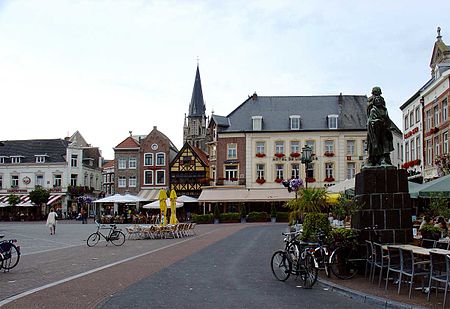Sittard-Geleen

Sittard-Geleen (Dutch: [ˈsɪtɑrt xəˈleːn] ; Limburgish: Zittert-Gelaen [ˈzɪtəʀt xəˈlɛːn]) is a municipality in the southeastern Netherlands. It was formed in 2001 from the former municipalities Sittard, Geleen and Born. The combined municipality has approximately 92,518 inhabitants (March 2019) and is thus the second most populated municipality in Limburg (after Maastricht with 125,000 inhabitants). Since February 2020, the city has been governed by a coalition of CDA (Christian Democrats), GroenLinks (Green) and the local parties GOB and Stadspartij.The highway connecting the centres of Sittard and Geleen, the Rijkswegboulevard, has been rebuilt to be a main route for cycling and walking. The cycling and walking provision is both generous and continuous. Side road junctions, or crossroads, are made 'subordinate'. The carriageways have been narrowed to one 3m lane in each direction. Parking places have been made, in small groups, at the side of the carriageways. These are made to be 'not easy to use for larger vehicles' and so the road centre is marked as a place for delivery vehicles to stop. Information supplied by the highway engineers: Büro für Stadt und Verkehr (BSV), Aachen, Germany. To the west, Sittard-Geleen borders on Belgium, while to the east, it borders on Germany.
Excerpt from the Wikipedia article Sittard-Geleen (License: CC BY-SA 3.0, Authors, Images).Sittard-Geleen
Ligne, Sittard-Geleen
Geographical coordinates (GPS) Address Nearby Places Show on map
Geographical coordinates (GPS)
| Latitude | Longitude |
|---|---|
| N 51 ° | E 5.8666666666667 ° |
Address
Ligne 17
6131 MT Sittard-Geleen
Limburg, Netherlands
Open on Google Maps









